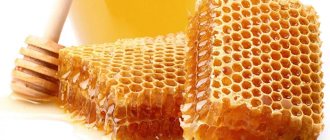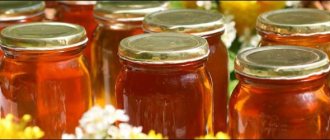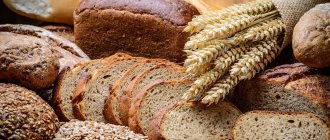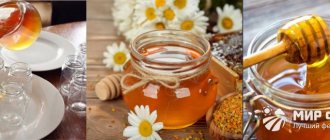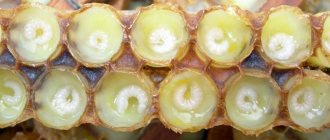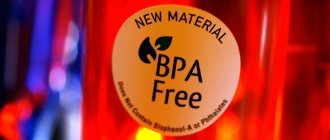Honey is considered one of the healthiest and most delicious foods. Thanks to it, you can maintain and improve immunity, saturating the body with important vitamins and microelements. The delicacy can be eaten or used in cosmetology and alternative medicine. But, like any other product, honey has its own storage characteristics and shelf life. Much depends on the container in which it is located, since if the rules for maintaining the product are followed, it is possible to preserve its healing properties for up to several years.
In ancient times, honey was stored in barrels made of natural wood. Now the material has been replaced with a more affordable one – food grade plastic.
Treatment of SARS-CoV-2 infection and bee venom
Severe acute respiratory syndrome coronavirus (SARS-CoV-2) is the causative agent of coronavirus disease 2022 (COVID-19), a respiratory infection that was first detected in Wuhan province in China in late 2022 and became a global pandemic in 2020. COVID-19 poses enormous public health challenges, including a large number of asymptomatic cases. Scientists are looking for various ways to combat the infection. The scientific review “Bee venom and SARS-CoV-2”, published by the scientific publishing house Elsevier, is devoted to the ability of domestic bee venom to resist the epidemic.
Course of the COVID-19 disease
Severe SARS-CoV-2 infections are characterized by cytokine storm syndrome, hyperinflammation, and multiple organ failure. Host cells are infected through the angiotensin-converting enzyme 2 (ACE-2) receptor, which is associated with both innate and acquired immunity. ACE2 is thought to enhance viral replication and host cell invasion and is a major component of the renin-angiotensin-aldosterone system (RAAS), interacting with cardiovascular enzymes to trigger a cascade of cardiovascular disease. ACE2 may be the reason why patients with SARS-CoV-2 require pharmacological thrombosis prophylaxis. The pathogenesis of SARS-CoV-2 involves viral binding to epithelial cells and local spread with minimal innate immune response.
The second stage of infection is characterized by increased spread of the virus, an active immune response, spread of the virus to the lower respiratory tract and may include the cardiovascular and digestive systems.
The third stage involves hypoxia, infiltration of the entire respiratory system, and finally acute respiratory distress syndrome (ARDS), which is potentially fatal. SARS-CoV-2 is associated with coagulopathies, thrombotic events, and lymphocyte depletion.
Coronavirus treatment protocols
There is currently no generally accepted alternative treatment protocol for SARS-CoV-2, although the administration of polyclonal antibodies shows some promise. The effectiveness of chloroquine and its derivatives in preventing COVID-19 is ongoing, as is famotidine, an antiulcer drug given in high doses for 14 days to control SARS-CoV-2 infection. Remdesivir, which was previously used to treat Middle East respiratory syndrome-Coronavirus (MERS-CoV), has been investigated as a drug candidate against SARS-CoV-2. Lopinavir/ritonavir combinations, commonly used to prevent HIV/AIDS, are also being studied for effectiveness against SARS-CoV-2.
Using poison as medicine
Neutrophil extracellular traps (NETs), common in snakes, insects, arachnids, and centipedes, have also been considered for SARS-CoV-2. Bee venom may act as ACE2 inhibitors or angiotensin receptor blockers (ARBs), although research on bee venom and SARS-CoV-2 is sparse. Snake venom is known to act through phospholipase A2 (PLA2) to produce arachidonic acid, which causes hypotension. In humans, Hymenoptera venom reduces key parameters of the RAAS. The combination of bee venom and propolis has been associated with hypotension in laboratory animals due to decreased serum angiotensin levels, demonstrating a close relationship between bee venom and the ACE2 pathway.
Is it possible to eat honey that has crystallized in a plastic container?
The separation of honey into thick and liquid is a normal process during long-term storage.
It does not degrade the quality of the product and does not affect the usefulness and taste. Honey crystallization is a natural process of making the product natural. It is a sign of the quality of honey. No chemical reactions occur during crystallization. This process depends on certain conditions: temperature, humidity, storage duration, mechanical stress. The main components of honey are glucose and fructose. It is these substances that underlie the process. Glucose crystallizes, and fructose remains in a liquid state, surrounding the crystals. If honey contains more glucose, the crystallization process will begin earlier. This includes, for example, sunflower honey. If it contains more fructose, then there will be much fewer honey crystals, as, for example, in acacia honey.
The ratio of water and glucose also plays a huge role in this process. That is, if there is more water in honey than glucose, then it will remain liquid longer. Low temperature slows down the crystallization process, since the molecules move much more slowly than at higher temperatures. At high temperatures, large crystals form.
How to properly store honey so that the product does not spoil and retains its beneficial properties for a long time, watch our video:
If honey is stored for a long time, this also affects the crystallization process - over time, the concentration of glucose in honey decreases, and fructose begins to predominate. Accordingly, the honey becomes liquid again. Mechanical action destroys the formed crystals, which slows down and stops the crystallization process. If you add thick honey to liquid honey, the process will go much faster - the existing crystals will join the rest, and their mass will increase.
Biological variability of bee venom composition
Toxicity of bee venom
Bees and wasps belong to the order Hymenoptera insects. Hymenoptera venom causes toxic or allergic reactions, mainly caused by biochemical compounds associated with local inflammatory effects. Bites protect the colony in all insects of the order Hymenoptera. Bees have the greatest amount of poison. Melittin is the best known compound responsible for these allergic reactions, although the combination of mast cells with IgE causes the activity of leukotrienes, histamines and platelet activating factors during allergic reactions.
Hymenoptera venoms contain dopamine, epinephrine, hyaluronidase, norepinephrine, serotonin, histamine, phospholipases A and B, but only bee venoms contain mast cell degranulating peptide, melittin and apamin. Bees of different types; Apis mellifera mellifera and Apis mellifera ligustica (in Europe) and Apis mellifera scutellate (in Africa) are capable of poisoning humans to varying degrees. The average lethal dose of bee venom ranges from 2.8 to 3.5 mg/kg body weight, and on average 140–150 μg of bee venom is injected during a sting. The chances of death from multiple bee stings are minimal in non-allergic people, and the severity of poisoning is properly dependent on the body weight, age and immune status of the victim. The number of stings and any previous sensitization to bee venom influence the severity of the poisoning.
After the sting, the bee freed itself from the sting. The sting, remaining in the body, continues to exude poison.
Composition of bee venom
Bee venom is a transparent, colorless, odorless, watery liquid with a pH of 4.5–5.5 with a bitter taste, and in some cases with a pungent decorative odor. The composition of bee venom is influenced by extraction methods due to its volatility.
The venom of Apis mellifera is probably the most studied venom of the Hymenoptera. The venom of all Apis species is similar in composition and quality. A. florea, the honey bee, is the smallest in its family, and A. dorsata is the largest. The venom of Apis cerana is twice as toxic as that of Apis mellifera. In the venom glands of A. dorsata, A. cerana, A. mellifera, A. florea, differences were observed in the composition of the venom glands and the secretion of the venom sac, as well as in the concentration of lipids, proteins, acid phosphatase and hexokinase activities. The compositions of lipids, proteins, carbohydrates and alkaline phosphatase were found to be similar in A. cerana, A. mellifera, A. florea. Glycogen was absent in both the venom gland and the venom sac of Apis species.
The variability in the composition of bee venom depends on the species, age, geographic location and condition. Young worker bees have lower concentrations of melittin and histamine and higher concentrations of apamin than older worker bees. Queen bees have low concentrations of melittin and apamin and high concentrations of histamine. APi M reaches its peak when the bee is about 28 days old and decreases with age. PLA2 levels peak around the 10th day of birth. African bees secrete small amounts of venom upon stinging, with high concentrations of PLA2 and decreased concentrations of melittin and hyaluronidase. Seasonal variations in bee venom composition have been reported; for example, APi M production increases in winter but decreases in summer.
How long can honey be stored in plastic containers and at what temperature?
If you plan to store honey in plastic containers, you must maintain the correct temperature conditions and ensure that the packaging is sealed.
The shelf life in plastic containers is limited, but this is not due to the characteristics of the packaging itself, but to the quality characteristics of the product. Provided that the container is sealed, protected from light and at a certain temperature, the shelf life can be up to 5 years.
The best conditions for storing honey are honeycombs. They retain their healing properties for up to 15 years. Subject to storage conditions in plastic containers, the quality of the product is guaranteed for 3 years. If the can is opened, air enters, and it is placed in direct sunlight, then such a product should be consumed as quickly as possible.
The storage temperature recommended for long-term storage should not exceed 15 °C. The best place for storage is the refrigerator. If the temperature exceeds 20 °C, the product begins to deteriorate and becomes bitter and dark.
This delicacy, like any product, has its own expiration date. It can be stored in a beehive indefinitely, as it is a food reserve for bees. There it is located in honeycombs that prevent various microorganisms from entering it. Once the cell is full, the bees seal it, which prevents oxygen from entering and further fermentation of the honey.
The best option is to store honey in honeycombs. This will preserve the sweet nectar and all its beneficial properties.
There are three forms of honey: in combs, liquid and thick. Each of them has its own shelf life. According to GOST, it does not exceed 1 year, but under the right conditions this period is several years. At home, honey is best stored in the form of honeycombs, since their composition includes wax, propolis and honeycomb. These substances retain the beneficial properties of honey. The shelf life in this form is 10–15 years.
Liquid honey thickens over time, this happens after more than 1 year or at temperatures below –20 ° C. The shelf life itself depends on other components, but there is one feature - if honey is collected in dry summer or late autumn, then such a product will not be stored for long. The best time to purchase delicacies is August-September. You need to purchase it at special fairs from beekeepers. May, acacia (floral) and linden are stored the longest. Store-bought honey is good for no more than 1 year.
The effect of bee venom on the body
Bee venom therapy dates back to the era of Hippocrates, where it was used to relieve joint pain and arthritis. In modern medicine, bee venom is used to treat multiple sclerosis, arthritis and Parkinson's disease. The activity is based on the positive effects of the anaphylactic reaction on metabolism and organelles, especially the respiratory system. Bee venom demonstrates effectiveness against HIV , and its effectiveness against H1N1 provides hope for additional therapy for protection against SARS-CoV-2. Allergens may help fight COVID-19. Bee venom can cause an increase in specific IgE and IgG antibodies and leads to the production of IgE antibodies that can react to various antigens. Although IgE is responsible for allergy outbreaks, it also plays a protective role against a wide range of allergens.
Bee venom can act as an adjuvant in combination with Toll-like receptor (TLR) ligands and modulate the immune system, enhance the differentiation of foxP3-expressing cells and increase circulating regulatory T cells. Bee venom causes an increase in CD25, CD4+ T cells, and foxP3 mRNA, resulting in a shift in the bee venom-specific IgG4/IgE ratio.
Bee venom regulates the immune response and physiopathological changes and supports clinical observations in apitherapy, where immunity against COVID-19 was shown by beekeepers in Wuhan Province, People's Republic of China.
Phospholipase A2 (PLA2) bee venom can trigger mast cell maturation, plays an important role in cell signaling and for the production of key lipids, and can act as a receptor ligand. PLA2 can inhibit the flow of inflammatory cells to targets.
Bee venom can lead to long-term induced tolerance to related allergens, such as the function of reducing IgG4 levels and activating IL-10, modulating the immune system and inducing TH2 to TH1 bias.
Melittin (APi M 1) can be used to create mimotopes. The bee venom component APi M 10 (icarapine) activates effector cells in patients with bee venom allergy. Since IgE has an epitope for APi M 10, this may provide an opportunity for adjuvant development. Bee venom antigens can be used as adjuvants for pain relief, and the effect of melittin on the formation of cell membrane pores, leading to apoptosis, serves to enhance adjuvant properties.
Bee venom also has antiviral properties. Bee venom can desensitize mast cells and basophils and suppress innate lymphoid cells. Bee venom components can inhibit protein synthesis, induce angiogenesis, and activate caspase-3-8-9.
What determines the shelf life of vodka?
The shelf life of vodka, like any product, depends on certain conditions:
- from the composition;
- on storage and transportation conditions;
- from container.
Composition of the drink
When discussing the shelf life of vodka, you need to know its classification.
According to its composition, “white” is divided into simple and special:
- A simple
alcoholic drink is prepared from ethyl alcohol and specially prepared water (spring or purified). Some manufacturers add it to certain brands of product. This vodka is harder to drink, has a pronounced smell of alcohol, but lasts longer if it contains high-quality ingredients.
Vodka with the addition of components of plant origin: herbs, fruits, berries is called special This is done to give the drink softness and drown out the harsh “aroma”. Over time, the fillers enter into an oxidation reaction with alcohol, which renders the vodka unusable. This product must be used within six months, maximum 12 months from the date of manufacture.
High-quality vodka has a mild taste and a sweetish aftertaste; bitterness is unacceptable
Storage and transportation conditions
- keep indoors without exposure to sunlight;
- maintain storage temperature from -15 to +30 degrees;
- maintain indoor humidity at 85%;
- monitor the integrity and tightness of the packaging.
The shelf life of vodka directly depends on the conditions of transportation of the alcoholic beverage.
- Vodka, like any alcohol-containing liquid, does not tolerate temperature changes, so it is not transported in hot or cold weather. The optimal temperature is considered to be 11-12 degrees Celsius.
- If the journey takes several days, the cargo is placed in refrigerators or insulated vans.
- Enclosed transport is used to prevent sunlight from entering.
- To maintain the integrity of the packaging, care is taken to firmly strengthen the products.
Storage containers
If you pay attention to the containers in which the “transparent tear” is placed on store shelves, you can conclude that the most suitable for it are glass bottles of various capacities. And it is right. Do you know that…
Do you know that…
Alcohol is a chemical substance. It enters into an oxidation reaction with both vegetable fillers and containers.
There is often a debate among consumers about whether vodka can be stored in a plastic bottle.
- Ethyl alcohol actively interacts with this polymer, releasing toxic substances into the solution. When they enter the human body, they cause severe poisoning.
- For the same reason, you should not pour “white” into crystal or ceramic decanters, even for a short time.
Glass is least susceptible to change from exposure to alcoholic beverages
Tip of the day
Toxicity of bee venom against COVID-19
Bee venom is cytotoxic at high doses, however non-cytotoxic concentrations of bee venom ranging from 1 to 3 μg/ml show significant therapeutic potential. Low doses, controlled concentrations and diluted bee venom produce a range of anti-inflammatory responses and are used to treat diabetes, rheumatoid arthritis (RA), heart disease, obesity, asthma, skin diseases and diseases of the central nervous system, nervous system diseases such as Alzheimer's disease, Parkinson's disease and sclerosis. At low doses, bee venom can suppress inflammatory cytokines such as interleukin-6 (IL-6), IL-8, interferon-γ (IFN-γ), and tumor necrosis factor-α (TNF-α). Reductions in signaling pathways responsible for the activation of inflammatory cytokines such as nuclear factor-kappa B (NF-κB), extracellular signal-regulated kinase (ERK1/2) and protein kinase Akt and lipopolysaccharide (PgLPS)-treated human keratinocytes were associated with treatments including bee venom
Bee venom has been used as an anti-inflammatory agent by combining bee venom compounds, i.e. secretory phospholipase A2, with phosphatidylinositol bisphosphate or cells, mainly dendritic cells (DCs), or combining bee venom with DCs. Conjugation of hormone receptors and gene therapy transporters to bee venom peptides as a useful new targeted therapy to positively modulate immune responses has been applied in antitumor and anti-inflammatory therapy.
The bees left their stings on the beekeeper's hand. Three bee stings are a good “vaccination”!
Immune responses to bee venom are toxic in high doses, but when controlled or diluted (controlled concentrations), these immune responses can serve as immunomodulators. Controlled allergic immunity may be useful in protecting the patient from antigens and pathogens, including RNA viruses. Bee venom can stimulate type 2 immune responses, type 2 immunity is initiated by antibodies to T cells (T helper cells type 2) and immunoglobulin (Ig (IgE and IgG1), as well as the action of the innate immune system such as epithelium and white blood cells and serves as a protective barrier to eliminate antigens. Group III BV SPLA2 exhibits effects on the immune system in vitro and in vivo. Modulated immune responses from bee venom may alleviate immunological diseases such as rheumatoid arthritis, inflammatory diseases, asthma and Parkinson's disease. Innate immune system induces protective immune response against bee venom antigens through pattern recognition receptors (PRRs), including Toll-like receptors found in molecular patterns associated with pathogen-associated molecular patterns (PAMPs).Bee venom in therapeutic disease is an anti-inflammatory agent that reduces the number of infiltrated inflammatory cells and the expression of tumor necrosis factor (TNF)-α, interleukin (IL)-1β, Toll-like receptor (TLR) 2 inhibition and CD14. Bee venom also inhibits nuclear factor-κB (NF-κB) and activator protein (AP)-1 binding potential. The human IL-1 receptor (anakinra) also exhibits anti-inflammatory activity, but information linking this receptor and bee venom remains sparse.
Bee venom phospholipase 2 (bvPLA2) is a major bee venom allergen and stimulates the innate immune system by binding to pattern recognition receptors (PRRs), such as Toll-like receptors, which recognize pathogen-associated molecular patterns (PAMPs), triggering a type 2 immune response. . bvPLA2 induces T helper cell and group 2 innate lymphoid cell (ILC2)-type responses, which are facilitated by the enzymatic breakdown of membrane phospholipids and the secretion of IL-33. bvPLA2 also induces the production of IgE, which has been shown to protect against future allergic/immunological reactions (in the case of a lethal dose of bee venom). PLA2 plays a vital role in patient protection in Th2 differentiation, ILC2 activation, immunoglobulin production, membrane remodeling and anti-inflammatory responses.
Bee venom shows a positive immunomodulatory role, reducing tumor progression and activating the immune system by combining bvPLA2 with phosphatidylinositol (3,4)-bisphosphate or cells, mainly dendritic cells (DCs). DCs produced with bee venom in vivo have both anticancer and antiviral properties. DCs, in combination with tumor or viral antigens, produce major histocompatibility complex (MHC) class I and II peptide epitopes for CD8 and CD4 T lymphocytes.
PLA2 (bvPLA2-H34Q) binds to the membrane and in vivo combines antigens with the membrane of human DC cells, causing stimulation of CD8 T cells, and antiviral and antitumor vaccines (DC vaccine) can be produced from bee venom using DCs. These cell-based antiviral/antitumor vaccines are used during immunization against viruses, including cytomegalovirus, and for tumor suppression. Bee venom is a well-known adjuvant-enhanced antimicrobial and antitumor vaccine. Melittin, bvPLA2 and phosphatidylinositol-(3,4)-bisphosphate are effective adjuvants against leishmania, antitumor and anticytomegalovirus vaccines. Conjugation of bee venom peptides to hormone receptors and gene therapy can positively modulate immune responses. Targeted antitumor and anti-inflammatory treatment methods are used.
Bee venom can be used as an analgesic in controlled doses; inhibition of cyclooxygenase activity and blocking of the prostaglandin synthetase system, resulting in antipyretic, anti-inflammatory and antinociceptive/analgesic cascades. In diluted form, bee venom can cause antinociceptive effects through α-adrenergic receptors (activation of spinal α-adrenergic receptors). Conjugation of bee venom peptides to protein receptors such as hormones and peptide transport genes provides innovative bee venom-controlled anti-inflammatory, antinociceptive and immunomodulatory therapies.
Storage Tips
By neglecting the rules for storing bee products, you risk encountering a phenomenon such as separation into 2 fractions or spoilage of the product.
Honey can crystallize and divide into 2 layers. It depends on the quality of the product. It is impossible to leave it liquid without any external influences. Only freshly extracted honey can have this consistency.
In order for it to remain liquid longer, while losing a minimum amount of useful substances, you need to heat it in a water bath at a temperature not exceeding 40 °C. Moreover, you need to melt only that portion of honey that is being prepared for use at the moment. Then it will retain as many of the substances necessary for the body as possible, and consuming such honey is not only pleasant, but also healthy.
Honey is kept liquid for a long time in honeycombs due to the enzymes present in them. Or you can stir the honey periodically, which helps keep it in a liquid consistency longer.
Beekeepers give several tips that will help preserve honey longer:
- before pouring into a plastic container, lubricate its walls with propolis;
- thoroughly wash the inner walls of the container and wipe dry;
- if possible, sterilize the jar with steam;
- store in complete darkness;
- observe temperature and humidity conditions;
- pour nectar into the jar to the brim;
- if it is necessary to take a small portion, pour the treat over the edge; if the honey is thick, use only a clean spoon when applying;
- pour into small containers with a volume of 0.5–1 liters.
Pharmacodynamics of bee venom components
Bee venom contains enzymes (phospholipase A2 (PLA2), phospholipase B, hyaluronidases, acid phosphatases, acid phosphomonesterases, α-D-glucosidases and lysophospholipases); peptides (lytic peptide melittin, apamin, degranulating peptide of mast cells (mast cells), secapin, pamin, minimin, procamine A, B, protease inhibitor, trettiapine, cardiopep and adolapine); and amino acids include g-aminobutyric acid and a-amino acid. Non-peptide components include amines (dopamine, histamine, norepinephrine, neurotransmitters), carbohydrates (glucose, fructose), pheromones (isopentyl acetate; n-butyl acetate; isopentanol; n-hexyl acetate; n-octyl acetate; 2-nonanol; n-decyl acetate; benzyl acetate; benzyl alcohol; and (2) -11-eicosen-1-ol).
Bee venom has been shown to have anti-inflammatory, antinociceptive, antioxidant and anti-apoptotic properties and has been shown to alter gene expression and fibrosis. Side effects include pro-inflammation (higher doses of PLA2, mast cell degranulating peptides, hemolytic compounds (melittin)), allergic reactions to protease inhibitors and peptides, anaphylactic reactions and death.
Multiple protein allergens in bee venom are responsible for the allergic reaction. Allergic reactions can occur in the respiratory system, gastrointestinal tract, cardiovascular system, skin from bites and can lead to severe anaphylactic shock, sometimes leading to cerebral or myocardial ischemia. The non-immune-mediated mechanism of bee venom allergy involves the production of the mediators bradykinin (BK), which leads to anaphylaxis as a result of activation of PLA2 by melittin (mimicking BK).
How to choose a plastic jar?
Prices for honey in glass jars are much higher than for honey sold in plastic. There is no point in paying extra money for packaging. Anyone who wants to save money is recommended to give preference to food-grade plastic containers. This will provide significant budget savings.
If the container has a designation in the form of a cutlery or glass, this indicates that it is suitable for storing food. The PP (PP) marking also indicates safety. This container is made of polypropylene and does not synthesize toxic substances during the heating process.
Convenient plastic container for honey
Bee nectar, various in plastic buckets
It is important to evaluate the tightness of the lid; mold often forms in plastic containers if storage rules are not followed, if the seal is broken.
Choose between metal and plastic packaging, give preference to plastic. Metals are susceptible to oxidation during prolonged storage of the honey product. Over time, they begin to synthesize dangerous substances.
When purchasing bee nectar poured into plastic containers, it is recommended to ensure that there is a certificate for the packaging.
Bee venom in the treatment of cancer
Bee venom has been studied for cancer; melittin is considered cytolytic but nonspecific. Melittin can disrupt the lipid bilayer of the membrane and exhibits toxicity when administered intravenously. APi M has the ability to suppress tumor growth in breast, liver, prostate and lung cancer cells. In vitro and in vivo studies indicate that melittin can suppress cancer cell growth by inhibiting NF-κB signaling and activating caspase 3 and 9 pathways. Inhibition of hepatocellular carcinoma cell motility has been observed in vitro and in vivo through inhibition of Rac1-dependent pathways.
Anti-inflammatory potential of bee venom
Low doses of bee venom produce a range of anti-inflammatory responses that have been studied in diabetes, rheumatoid arthritis (RA), heart disease, obesity, asthma, skin diseases and diseases associated with the central nervous system (Alzheimer's disease, Parkinson's disease, etc.) sclerosis). Bee venom suppresses inflammatory cytokines, including interleukin-6 (IL-6), IL-8, interferon-γ (IFN-γ), and tumor necrosis factor-α (TNF-α). Reductions in signaling pathways responsible for the activation of inflammatory cytokines, nuclear factor-kappa B (NF-κB), extracellular signal-regulated kinases (ERK1/2), protein kinase Akt, and human Porphyromonas gingivalis lipopolysaccharide (PgLPS) keratinocytes are associated with melittin treatment (65 ) (Fig. 2).
The body's response to bee venom
Bee venom therapy may alleviate immune diseases. Bee venom secretory phospholipase A2 exhibits in vitro and in vivo activity in the immune system and is used to treat asthma, Parkinson's disease, and drug-induced organ inflammation. Immune reactions to bee venom can be dangerous when highly elevated, but when controlled, allergic immunity can be beneficial in human defense to stimulate type 2 immune responses. Type 2 immunity is mainly based on barrier defense, and these responses are initiated by T helper type 2 (TH2), immunoglobulins E and G1 (IgE and IgG1), antibodies and other components of the innate immune system (epithelial barriers, innate lymphoid) cells - ILC , eosinophils, mast cells, basophils and activated macrophages). The innate immune system senses venom components, inducing a protective immune response against antigens through pattern recognition receptors (PROs), such as Toll-like receptors found on pathogen-associated molecular patterns (PAMPs).
The anti-inflammatory properties of bee venom can suppress the activity of inflammatory antigens, reduce the number of infiltrated inflammatory cells, and suppress the expression of (TNF)-α, IL-1β, Toll-like receptor (TLR) 2, and CD14 expression. , inhibiting the binding activity of nuclear factor-κB (NF-κB) and activator protein (AP)-1. The major allergen of Bet V 1, PLA2, stimulates the innate immune system by binding to PRRs, such as Toll-like receptors, which recognize PAMPs, inducing a type 2 immune response. PLA2 in BV induces T helper 2 (Th2) cell type responses and group 2 innate lymphoid cell (ILC2) activation through enzymatic degradation of membrane phospholipids and secretion of IL-33. PLA2 induces IgE production, protecting against future allergic/immunological reactions in the event of a lethal dose of bee venom; PLA2 plays a critical role in human defense by enhancing Th2 differentiation, ILC2 activation, immunoglobulin production, membrane remodeling, and anti-inflammatory responses.
Features of choice
There are several tricks and secrets on how not to be deceived. Try to buy honey where you can check the quality.
- Composition test. You need to scoop the sweetness into a spoon, lift it above the main mass and turn the spoon so that the honey drips from it. A real one will wrap in folds, like wrapping ribbon around a spoon. Drain - in an even, continuous stream, lying on top of the main mass in a slide. If honey flows easily from a spoon and dissolves in the total mass, it means there is a lot of liquid in it. There is a high probability that it is diluted with glucose syrup, water, or some other liquid, was artificially obtained, or is beginning to sour.
- Weight. Real honey is heavy: a liter weighs about 1.5 kg.
- Consistency. After collection, honey does not thicken for a month. If liquid honey is on sale in winter, it means it has been diluted or melted.
- Signs of fermentation. Honey should not foam. If you see obvious foam, the fermentation process has most likely begun.
- Foreign impurities. The presence of small pieces of wax or parts of bees in honey is not a 100% guarantee of naturalness, since unscrupulous sellers can add all this separately.
- Appearance. The product must be homogeneous. No delaminations are allowed.
Honey in combs is almost impossible to fake. At the same time, storing honey in honeycombs in an apartment is not difficult. The most suitable place is the refrigerator. Place the pieces in a container, close tightly and put them in a permanent storage place. If all conditions are fully met, you can keep it for several years. But remember: properties decrease by about 10% annually.
Bee venom vaccines
Bee venom can suppress tumor progression and activate the immune system by combining the secretory phospholipase A2 in BV with compounds including phosphatidylinositol (3,4)-bisphosphate or dendritic cells (DCs). DCs treated with bee venom in vivo exhibit anticancer and antiviral properties. DCs in combination with tumor or viral antigens can produce class I and class II major histocompatibility complex peptide epitopes on CD8 and CD4 T lymphocytes, leading to a series of immune responses in response to the antigens. Phospholipase A2 BV (bvPLA2-H34Q) is membrane bound and binds antigens within the cell membrane of human DCs in vivo. This induces recognition and activation of CD8 T cells, implying that antiviral and antitumor vaccines can be derived from bee venom (DC vaccine).
Bee venom and DC vaccines (cellular antiviral/antitumor vaccines) are used for immunization against viruses such as cytomegalovirus and for tumor suppression. Bee venom can be used as a potent adjuvant-enhanced antimicrobial and antitumor vaccine and shows potential in melittin-containing vaccines. sPLA2 and phosphatidylinositol (3,4)-bisphosphate are effective adjuvants (leishmania vaccines, antitumor and anticytomegalovirus vaccines).
The leading adjuvant therapy for SARS-CoV-2 currently being promoted is aluminum hydroxide due to its slow release and increased interaction with antigen-presenting cells.
Bee venom is a candidate for combating SARS-CoV-2 infections and may provide benefits against COVID-19. PLA2 has been associated with the level of success in controlling SARS-CoV-2 infections. Conjugation of bee venom peptides may offer a new approach to developing a bee venom vaccine.
Honey storage rules
To maximize the shelf life of honey, regardless of the time of year, sealed containers and cool air temperatures with low humidity levels will help.
Among other things, conditions such as humidity, light, and foreign odors must be taken into account.
Ideal places to store honey would be:
- in summer - a refrigerator;
- in winter - an enclosed balcony/loggia or cellar;
- pantry, kitchen cabinet away from smelly foods and heat source. In this case, all necessary conditions for storage will be provided: temperature, humidity and lack of light.
Storage containers
The shelf life is also influenced by the container in which the product is located. Glass, clay (it should be taken into account that untreated clay can absorb moisture) or ceramic containers, wooden (in particular, willow) barrels, enamel containers (the coating must be solid, without damage, since there are those under the enamel) are best suited for these purposes. materials, contact of the product with which will adversely affect it).
The most undesirable option would be lead, copper or galvanized iron containers. In them, the delicacy oxidizes and begins to release substances that are toxic to the human body.
Plastic containers are suitable for short-term storage; they are usually used for small volumes of honey, which is directly consumed as food. It has some requirements, including:
- tight fit of the lid (tightness);
- production from polypropylene;
- PP, PP markings;
- The marking is a fork with a glass, which indicates the food purpose of the container.
The container must be thoroughly washed and dried. You cannot add new portions of honey to old ones, as this will promote fermentation of the product.
Temperature
The shelf life of honey depends on the material from which the container is made and compliance with storage conditions.
It is also important to consider the storage temperature. At home, honey purchased from beekeepers is stored in a room at a temperature not higher than 20 ° C and not lower than 6 ° C in the refrigerator. If the temperature is exceeded, the beneficial properties will be lost, honey will turn into a regular mixture of carbohydrates and will sour faster.
When heated above 60 °C, the substance hydroxymethylfurfural is formed, which is considered a potential carcinogen. That is why it is not recommended to add it to hot drinks. Tea with honey is only beneficial if the honey is added to a warm drink, not a hot one.
Storage temperatures below 6 °C do not lead to loss of nutrients, but the honey will be very hard. It is advisable not to change the storage temperature.
Humidity
The ideal option would be low humidity (up to 18%). If there is high humidity, honey will absorb moisture and remain liquid for a long time. Because of this, its shelf life will decrease.
Smells
Remember that honey tends to strongly absorb any foreign odors.
Find in advance an airtight container for storing the bee product. Honey quickly absorbs foreign odors. If you store it near foods with strong aromas, its subtle taste will be replaced. Therefore, it is recommended to place containers with the product in separate cabinets or special closed compartments of the refrigerator. Even a short stay near garlic, onions, and spices will lead to a change in organoleptic qualities.
UV rays
When exposed to light, enzymes, vitamins and, accordingly, useful substances are destroyed. When stored under direct UV rays, the shelf life of the product is significantly reduced.
To meet all storage conditions, the plastic container must be airtight. This will prevent air from entering the container and foreign odors will not penetrate. During long-term storage, it is necessary to ensure sufficient filling of the product so that the air gap between the honey and the lid is minimal.
Link between bee venom proteins and COVID-19 proteins
SARS-CoV-2 belongs to the genus β-coronaviruses. SARS-CoV-2 has four apparent structural proteins: membrane, spike, nucleocapsid, and envelope proteins. The structural integrity of the SARS-CoV-2 virus is maintained by structural proteins and forms a protective shell around its RNA. The coronavirus membrane contains 3 or 4 viral proteins, the membrane glycoprotein is the most abundant structural protein and spans the membrane bilayer three times, with a long COOH tail inside the virion and a short NH2-terminal domain outside the virus. The SARS-CoV-2 genome encodes multiple reading frames (ORFs); ORF1a/b encodes 16 non-structural proteins and translates two polyproteins (pp1a and pp1ab), constituting up to 2/3 of the viral RNA. The remaining ORFs encode structural proteins (spike glycoprotein, matrix protein, nucleocapsid protein, and small envelope protein). SARS-CoV-2 has additional proteins that interfere with the body's innate immune response.
The spike protein is typically a type I membrane glycoprotein and is a peplomer known to be involved in antibody interactions. The membrane plays an important role in the intracellular production of viral particles independent of the viral spike. Coronaviruses grow and produce spikeless forms in the presence of tunicamycin, resulting in the formation of non-infectious virions that contain membranes but lack spines.
Melittin can pierce the protective membranes surrounding viruses, including human immunodeficiency virus (HIV). Many viruses, including SARS-CoV-2, rely on their protective envelope and may be vulnerable to bee venom therapy under the control of melittin.
Phospholipase A2 components of bee venom have potential antiviral activity. For example, melittin-loaded nanoparticles delivered significant amounts of intravenous melittin to target and eradicate precancerous lesions in K14-HPV16 mice with squamous cell dysplasia and carcinoma containing human papillomavirus (HPV) transgenic elements (E6 and E7 oncogenes).
In Hubei province, the epicenter of the SARS-CoV-2 outbreak in China, a local beekeepers' association surveyed 5,115 beekeepers between February 23 and March 8 (including 723 beekeepers in Wuhan) and found that none of them developed any -or symptoms observed in patients with COVID-19. Five apitherapists in Wuhan and 121 of their patients who received apitherapy between October and December 2022 were interviewed; two apitherapists were exposed without protection to suspected and/or confirmed victims of COVID-19. None of the apitherapists developed symptoms associated with SARS-CoV-2, and none of their 121 patients became infected with COVID 19, despite the fact that three of them had contact with relatives infected with SARS-CoV-2.
In apitherapy, honey bees and their products (bee venom, honey, royal jelly, pollen, propolis, beeswax) are used. Bee venom therapy uses venom to modulate the body's immune system and improve/facilitate healing and involves either the use of live bee stings or injected venom to treat arthritis, rheumatoid arthritis, multiple sclerosis (MS), lupus, sciatica, low back and joint pain. Hymenoptera products are powerful accelerators of wound healing. Insect venoms are less complex and less varied in composition and physiological activity compared to snake venoms. Bee venom can be administered to induce allergic immune responses that stimulate the body's innate immune system due to the presence of allergens that promote type 2 immune responses. Antiviral and antitumor effects of bee venom, when the secretory phospholipase A2 of bee venom is mixed with other compounds such as phosphatidylinositol-(3,4)-bisphosphate or dendritic cells, and/or bee proteins such as melittin, is preferred and used in the production of antiviral / cell-based antitumor vaccines.
The immunological properties of bee venom are also found in natural products that mimic bee venom, and other natural products could be considered in future studies regarding the role of bee venom as a potential candidate for use in complementary medicine to combat viruses such as SARS-CoV-2 , imitating the activity of bee venom.
Is it possible to store honey in plastic containers?
Since ancient times, honey was stored in wooden barrels, but in modern conditions this condition is almost impossible to fulfill. For convenience, it is bottled into more compact containers. Small-volume plastic jars are convenient for bottling and selling the product, which is why they are increasingly preferred by beekeepers. You should only choose jars approved for storing food products, which have special markings and are not hazardous to health. They are safe and do not affect the duration of preservation of beneficial properties.
Storing honey in plastic does not affect the quality of the product, provided that it is natural and the container material is food-grade and high-quality.
Modern chemical production allows us to produce high-quality containers that do not affect the taste and do not release toxic substances into the product.
Plastic containers have a number of advantages, which is why they are increasingly chosen not only by small beekeeping farms, but also by large industrial producers of delicacies.
The advantages of such packaging include:
- tightness;
- ease;
- practicality;
- low cost.
Another advantage is that plastic containers can be of any size and shape, which makes them convenient in everyday life. Unlike glass, plastic does not break, so it is more convenient to transport.
The potential of bee venom against coronavirus
The development of adjuvant therapies (using APi M and PLA2) for use against SARS-CoV-2 infections offers a unique approach to viral therapy. The development of a DC-based bee venom vaccine using APi M and bvPLA2 opens new opportunities for additional medical interventions against SARS-CoV-2 infections. Research examining cellular signaling between the bee venom proteins Janus kinase (JAK) and activator of transcription (JAK-STAT) will help strengthen its use in complementary medicine against SARS-CoV-2. JAK inhibitors are associated with improved prognosis in patients with COVID-19, but studies are needed to elucidate the cellular mechanisms. Synergistic activity through combinations in alternative and complementary medicine will help combat side effects associated with current monotherapies for treating SARS-CoV-2 infections. SARS-CoV-2 is a new virus, and new treatments may be needed to support treatment over time, which may be important for supporting the immune response in patients suffering from so-called long COVID.
Read more
Glass
A glass jar, in some cases, has its advantages. So glass, especially dark glass, does not transmit ultraviolet rays. In production conditions and on the store shelf, this advantage, of course, is not significant, but if you buy honey pre-packaged by a beekeeper or seller in the open air - in a tent without an awning near the metro or on hiking trails, then you should make a choice in favor of glass.
In a store environment, honey does not need additional protection from ultraviolet radiation and buying it in dark glass or frosted plastic does not make sense. On the contrary, it is better to see the product in person. Although, it is more pleasant to give honey as a gift in a transparent glass jar; it favorably sets off the color of the honey and has a fascinating shine.
